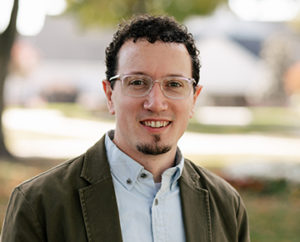 Over the years I have found myself taking time in class to encourage students in viewing the work of teaching and learning as an authentic act of worship. Often I would provide theological and Scriptural support to introduce the relatively new concept for many of my students. During these explanations I would experience a positive response: smiles, head-nods, and perhaps a student comment after class that this was a truly helpful idea.
Over the years I have found myself taking time in class to encourage students in viewing the work of teaching and learning as an authentic act of worship. Often I would provide theological and Scriptural support to introduce the relatively new concept for many of my students. During these explanations I would experience a positive response: smiles, head-nods, and perhaps a student comment after class that this was a truly helpful idea.
But after several years of trying to appeal to my students in this way, I began to sense a disconnect of sorts. I had made a strong cognitive appeal which students resonated with, and yet it was as if we couldn’t just “think” ourselves into experiencing learning as an act of worship.
Now, those of you who have read James K.A. Smith’s Cultural Liturgies trilogy or You Are What You Love (2016) will be familiar with the longstanding Christian tradition that humans are first and foremost not thinkers, but lovers, whose affections can be oriented or re-oriented through tangible practices. It’s this sort of anthropology and theology of worship that led to the formation of liturgies and other forms of confessional Christian practice (many of which were often foreign to my students church experiences).
As someone who deeply values liturgy and confessional Christian practices in my own local church, I began to think about what sort of “liturgy” or organizing practices I might use to more deeply welcome students into worshipful learning. Borrowing an idea from another professor, I gravitated toward one of the most ancient Christian liturgies, the Sursum Corda. Over the past several semesters I have opened each time we are together in class with a modified version of this prayer, which is a call and response “call to worship”:
PROFESSOR: The Lord be with you!
STUDENTS: And also with you.
PROFESSOR: Lift up your hearts!
STUDENTS: We lift them up to the Lord.
PROFESSOR: Let us give thanks to the Lord our God!
STUDENTS: It is right to give him our thanks and praise.
PROFESSOR: It is a right, good, proper, and joyful thing, at all times, and in all places to give you thanks, Lord God.
Here I join with my students in exhorting each other toward worship through the rhythms of life and learning during the semester. I have consistently received anecdotal and course evaluation feedback that this was a helpful practice for students, and I can certainly testify that it was been meaningful for myself as I prepare to teach.